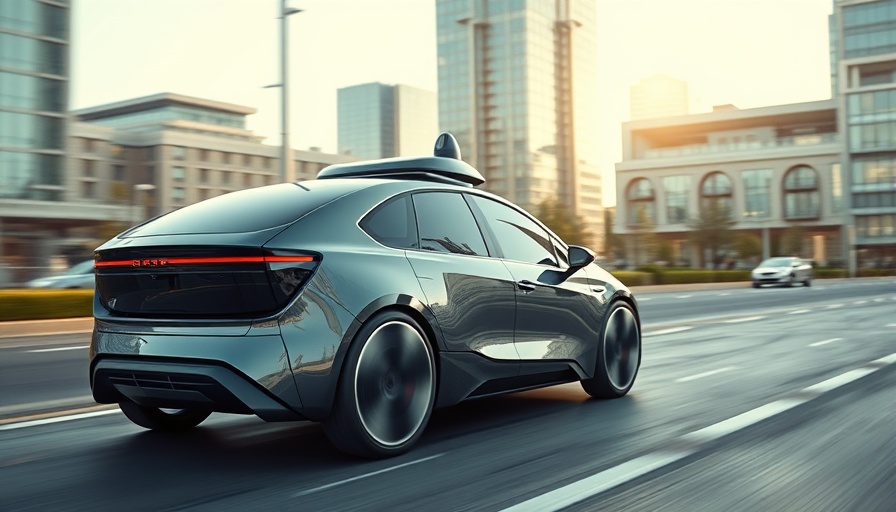
Revolutionizing Mobility: The Tensor Robocar's Unique Approach
The arrival of the Tensor Robocar marks a pivotal moment in the automotive landscape, as it is designed specifically for private ownership rather than shared services. While most autonomous vehicle innovations focus on fleet models, Tensor champions the idea of ‘Own Your Autonomy.’ This concept centers on individuals owning their own Artificial General Intelligence (AGI) systems, offering them unparalleled freedom and control. By moving away from the common practice of robotaxis, Tensor positions itself as a company that values personal agency over convenience.
A Shift in Paradigm: From Fleet Services to Personal Ownership
Tensor's transition from its predecessor, AutoX, which primarily operated robotaxi fleets, underscores a significant ideological shift. AutoX was instrumental in setting the stage for autonomous driving technology, operating over 1,000 robotaxis in China at its height. However, its withdrawal from the Chinese market and subsequent rebranding to Tensor indicates an enhanced focus on personal vehicle ownership. This move reflects a growing recognition that consumers desire the ability to possess their own autonomous vehicles rather than simply relying on shared fleets.
Technical Innovation: What Makes the Tensor Robocar Stand Out?
The Tensor Robocar is equipped with a sophisticated array of sensors—over 100 in total—designed meticulously for optimal performance. This diverse sensor suite, which includes high-definition cameras, LiDAR units, and ultrasonic sensors, ensures comprehensive 360-degree coverage. The extensive use of redundancy in sensor systems is a key feature that secures operational reliability even in the event of individual sensor failures. The Robocar's design has prioritized sensor visibility and performance, minimizing potential blind spots, thus elevating safety and reliability standards.
The Evolution of Autonomous Technology
While Tesla has captured headlines with its advanced driver-assistance systems, the rise of Tensor introduces a new dynamic to the discussion surrounding autonomous vehicles. The focus on personal ownership may inspire further competition and innovation in the industry. As levels of autonomy advance, vehicles like the Tensor Robocar represent a critical evolution in how we approach personal mobility.
Embracing the Future of Driving
The notion of owning an autonomous vehicle can be intimidating for some. However, Tensor aims to empower individuals by making advanced technology accessible. This shift in ownership models could reshape consumer expectations and preferences, nurturing a more individualized relationship with vehicles. The emphasis on consumer empowerment could very well set a precedent for how future automotive technologies develop.
Insights from Industry Trends
As we witness a transformation in the automotive sector, recognizing trends is essential for informed decisions. The pivot to personal ownership resonates with a growing desire among consumers for independence and control over their transportation choices. In contrast to ride-sharing models, this evolution aligns more closely with the ideals of sustainable autonomy and long-term investment in vehicles. Understanding these shifts can help consumers make savvy choices when considering their next vehicle purchase.
Industry Insider Tips for Navigating the Autonomous Terrain
For those interested in the implications of the Tensor Robocar, it is crucial to delve into automotive industry insider tips. Knowledge about automotive technology, market trends, and car maintenance can significantly enhance informed consumer decisions. As the market evolves, staying updated on automotive safety advancements and effective ownership strategies can empower buyers, making ownership of innovative vehicles like the Robocar a practical and rewarding experience.
As the automotive industry continues to advance, understanding the economics behind these vehicles is essential. Knowledge about fluctuations, financing options, and the maintenance of high-tech engines will aid consumers in this new automotive landscape.
Conclusion: Embracing a New Era of Automotive Autonomy
The introduction of the Tensor Robocar may well usher in an era defined by individual ownership and control, breaking free from traditional vehicle paradigms. As the world of autonomous vehicles continues to evolve, staying informed will empower potential owners to fully engage with the automotive innovations shaping tomorrow’s landscape.
For those navigating these changes, consider actionable insights from the automotive industry, such as understanding financing options and gaining knowledge about vehicle maintenance. By being well-versed, owners can enhance their experience with the next generation of mobility, ultimately reaffirming their place as leaders in this exciting automotive journey.
 Add Row
Add Row  Add
Add 




Write A Comment